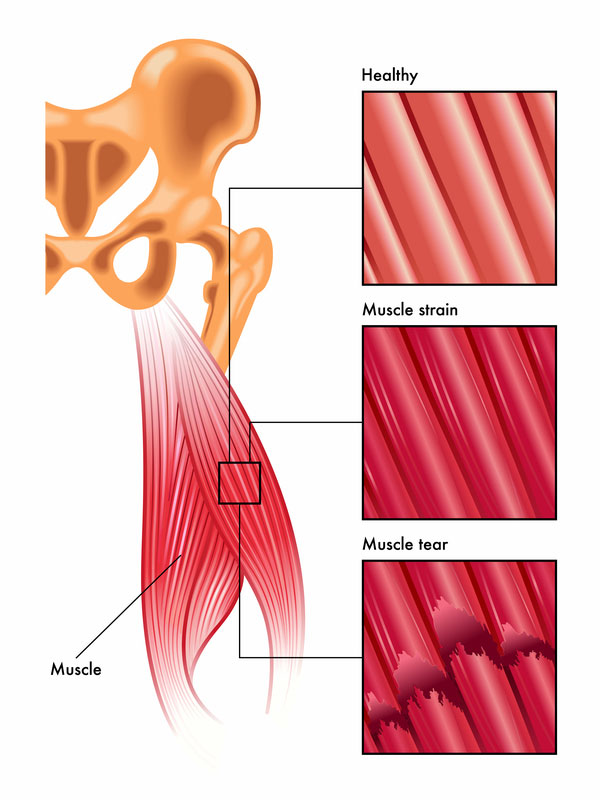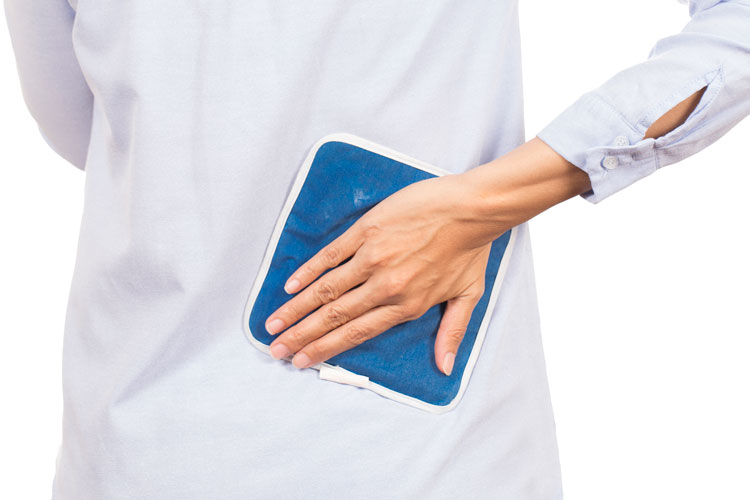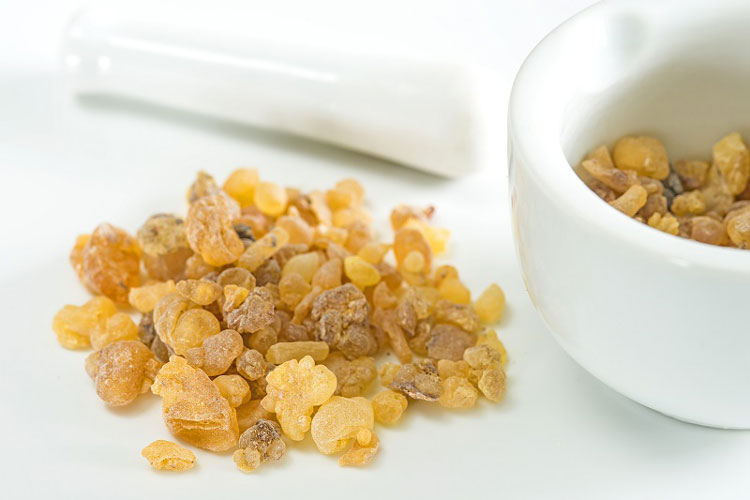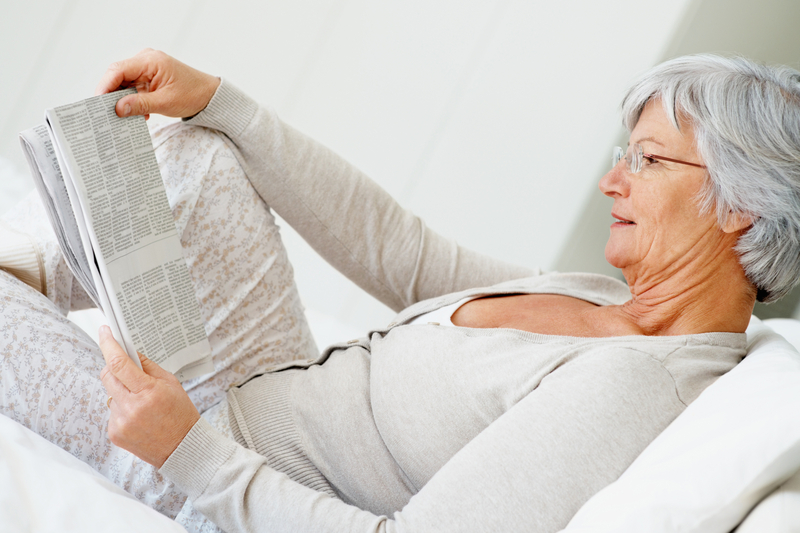
Medically reviewed by Dr. Brian Paris, D.C on Nov. 6, 2018.
If you haven’t already, you probably will at some point experience a pulled back muscle. They’re the most common cause of low back pain.
It could happen during a game of golf, while cleaning the garage, or even on the dance floor.
While we often tend to refer to any soft tissue pain in the back as a “pulled back muscle,” we’re really talking about two separate kinds of back injuries — strains and sprains.
In this article, I’ll show you the difference between those injuries and how to quickly recover from pulled back muscles without taking drugs like NSAIDs.
Table of contents
[#1] Strains vs. sprains
[#2] Am I at high risk for a pulled back muscle?
[#3] Things to avoid if you have a pulled back muscle
[#4] The 5 best ways to treat a pulled back muscle
[#5] How to prevent a pulled back muscle
What’s the difference between a strain and a sprain?
A strain happens when you injure either a muscle or a tendon. Your tendons are tough, fibrous tissues that connect your muscle to your bone.
When you are experiencing back strain, it means that you have twisted, pulled or torn the muscles or tendons that support your spine. If you stretch a muscle too much, you actually cause small tears in the muscle fibers.
A sprain, on the other hand, occurs when you stretch a ligament too far or tear it. Ligaments are the fibrous tissues that connect your bones at your joints.
Sprains and strains may not sound like serious injuries, but the back pain they cause can really hurt!
In fact, the pain can be so excruciating that some people are convinced they’ve done something terrible to their back — and that they’ll need surgery.

The good news is you definitely won’t need surgery. Pulled muscles in the back (whether it’s a strain or sprain) usually heal within days or weeks on their own.
Please note, if you have severe, constant pain that keeps you from sleeping, experience a loss of bladder or bowel control or have progressive lower extremity weakness, you may have a more serious injury to your lumbar spine and should be evaluated by a professional.
Although it’s possible to have a pulled muscle anywhere in your back, these strains and sprains most often occur in the lumbar region, or your lower back. One of the most common symptoms of a pulled back muscle is lower left side back pain.
And they’re so common they’re the second leading complaint doctors hear — after headaches. They’re also the second most common reason people miss work, after the common cold.
Key takeaway: “Pulled back muscle” is a catch-all phrase for two separate types of injury — strains and sprains.
Risk factors for pulled back muscles
While that pulled back muscle may seem to come on suddenly, chances are it was a long time coming.
You could be ignoring some very important warning signs. Which means if you’re not in pain now, you might want to sit up and pay attention.
Do you sit in a chair all day? Do you exercise incorrectly? Are you under tremendous stress? Are you dehydrated? Are you substantially overweight?
Did you honestly answer yes to one or more of those questions?
If so, then you’re at greater risk of muscle imbalances, trigger point pain, and at higher risk for injuries like a pulled back muscle.
But when you do experience pulled back muscles what do you do?
We’ll cover that more in the next section.
Key takeaway: There are several risk factors that can make you more susceptible to pulled back muscles, including stress, poor posture, being overweight and even how hydrated you are.
What NOT to do for a pulled back muscle
When your back hurts, you probably reach for a bottle of painkillers such as NSAIDs and get in bed or crash on the couch. Or you go to the doctor, who may prescribe muscle relaxants.
I’m not a fan of Big Pharma’s pills.
For one, both NSAIDs and muscle relaxants come with side effects. Some are just annoying, while others are downright dangerous.
Muscle relaxants like the popular Flexeril can cause:(i)
- dry mouth or throat
- blurred vision
- drowsiness, dizziness, tired feeling
- loss of appetite, stomach pain, nausea
- diarrhea, constipation, gas
- muscle weakness
And NSAIDs come with their own long list of dangerous side effects, the worst of which is an increased risk of heart attack or stroke.
For short-term pain relief, I recommend natural painkillers. (You can read more about my top recommendation for a natural anti-inflammatory below.)
But there are other ways to relieve the pain and speed up the healing process.
Key takeaway: Big Pharma’s solutions fall short when it comes to pulled back muscles — and may even cause serious side effects.
5 best ways to treat a pulled lower back muscle
Here are the five most important steps you can take now to help your body recover quickly from and treat a pulled back muscle:
1. Apply cold to the pulled back muscle

You should apply ice to your injury as soon as possible. The sooner you apply the ice the more it will help.
The cold will cause nearby blood vessels to constrict and also help minimize swelling and painful inflammation.
The cold also stimulates your body to rush more oxygen-rich blood full of antibodies and vital nutrients to repair the injury and carry away waste products as it attempts to warm the area.
Use an ice pack, a Ziploc bag of crushed ice, or even a bag of frozen vegetables in a pinch.
Apply the cold pack in a circular massaging motion to prevent the ice from resting in one place too long.
Be sure to place a thin towel between the compress and your skin to help prevent frostbite.
Ice can be applied up to 20 minutes at a time. Repeat over the course of the first few days, or after flare-ups.
2. Apply heat to the pulled back muscle
Try applying heat directly to the area that is strained or sprained right after the ice. This is a powerful way to “double-shock” your back muscles out of the pain-spasm cycle.
Apply 20 minutes of ice followed by 20 minutes of heat and repeat up to three times.
This should provide some relief from even severe lower back pain.
There are many ways to apply heat, including a long hot shower, ultrasound, heating pad, and pain cream.
If you want the gold standard in heat for pain relief, try a far infrared heating pad, which produces heat that penetrates much deeper than the superficial heating a standard heating pad offers.
As heat is applied, your back muscles relax and circulation increases again as your body sends fresh blood supply to cool the area back to normal. Repeat heat treatments as necessary.
3. Use natural anti-inflammatories

Think twice before you reach for that bottle of painkillers. It might kill more than just your pain.
The truth is inflammation is a normal part of the healing process. The problem with inflammation is our bodies lose the ability to turn off the inflammatory response as we get older.
Over-the-counter non-steroidal anti-inflammatory drugs (NSAIDs) like ibuprofen and naproxen can help with both pain and inflammation, but they also carry significant cardiac and digestive health risks.
A better approach is to replace what your body stops producing enough of as you age… specifically, systemic proteolytic enzymes.
These are the same enzymes your body uses to naturally quell inflammation once healing is complete and clean up excess scar tissue. By giving your body what it needs to heal instead of masking the symptoms, you both reduce painful inflammation and speed up actual recovery time.
4. Rest – but not too much

Don’t rest too long. A little couch time won’t hurt, but light activity speeds recovery, so avoid lying down for long periods of time.
Growing evidence shows there is little or no benefit to bed rest over staying active.
So use this rule of thumb: listen to your body.
Ultimately, your level of pain will determine your level of activity.
If a certain activity led to a pulled muscle don’t repeat it for at least a week.
For example, if your back pain started after lifting something heavy, avoid lifting heavy objects for at least a week while your pulled back muscle heals.
Also, avoid sitting for too long. Long periods of sitting can tighten your muscles and cause lower back muscle pain and stiffness.
When you sit and stand, use good posture, avoiding slumping in your head and shoulders.
5. Stretching and strengthening exercises

You’ll want to be very careful your first couple of days, but some light stretching can often reduce pain from a pulled muscle in your lower back by relieving tension. Include both strengthening and stretching exercises.
Try this easy stretch while lying in bed. Gently raise your knees from the bed to your chest, then put a slight pressure on your knees for a light stretch in your lower back.
This stretch can help relieve muscle spasms in your back faster than waiting for them to resolve on their own. The stretch should not add to your pain.
Remember to listen to your body.
Sometimes, back support compression braces can be useful during the healing process. This help keeps your spine stable and can help you from further irritating your lower back when you twist or bend throughout the day.
Compression can also assist in reducing swelling after an injury, so compression braces may be useful.
I don’t recommend you wear a compression brace all day, though — just for a few hours or when you know you’ll be most active.
Keeping it on for too long can keep you from healing fully, as you need to be able to strengthen those muscles in order to recover.
Key takeaway: To help your body recover more quickly and reduce pain from a pulled back muscle, alternate cold and heat therapy, use natural anti-inflammatories, get some rest (but not too much!) and try gentle stretches.
How to prevent a pulled back muscle
You can avoid pulled lower back muscles by taking some simple protective steps.
Watch what you eat

Stay away from inflammatory foods, such as baked goods, processed foods, fruit juice, soda, sweetened cereals, and fast food. They make your body more sensitive to pain.
Keep fresh fruits and vegetables the main part of your diet.
Also eat foods rich in back pain-relieving omega-3 fatty acids like salmon, sardines, and walnuts.
You need protein in your diet to help repair damaged tissue and to build and strengthen the muscle.
And don’t forget to drink plenty of water to hydrate tissues and organs and allow your body to regulate its temperature throughout the day.
Relieve stress
Many people hold emotional stress in their muscles. Frequent stress, anxiety, and tension can lead to tight muscles and muscle strains.
You may be able to prevent new or recurring back pain with simple techniques such as massage and meditation.
Studies show that massage is an effective way to reduce stress and relax tightened muscles.
And if you haven’t tried meditation, maybe you should.
As little as 10 minutes being still, breathing deep, and centering your thoughts can quiet both mind and body after a stressful day.
Support your back

What kind of support does your desk chair, car seat, or couch offer? Probably not enough.
Try using a back support cushion, or a back orthotic which cradles your pelvis and floats your spinal system to reduce all-day pressure buildup and automatically correct slouched sitting positions and promote good posture.
By improving your sitting posture you can relieve excess strain on back muscles that can make you prone to a pulled back muscle
Key takeaway: Improving your diet, reducing stress and getting the right back support can help prevent future occurrences of pulled lower back muscles.
5 takeaways about pulled back muscles
Key takeaway #1: Pulled lower back muscles (strains and sprains) can be extremely painful, but rarely require medical intervention.
Key takeaway #2: Several lifestyle factors could put you at greater risk for developing a pulled muscle in your back.
Key takeaway #3: Prescription and over-the-counter medications can often do more harm than good when treating a pulled back muscle.
Key takeaway #4: You can speed up recovery and reduce pain with a few simple at-home remedies: cold and heat therapy, natural anti-inflammatories, rest and stretching.
Key takeaway #5: To reduce your risk of pulling a back muscle in the future, focus on cleaning up your diet, reducing stress levels and making sure your back is properly supported.
Editor’s note: This article has been reviewed by a member of our medical advisory board. The content provided is for informational purposes only and should not be construed as medical advice. Please consult with your physician if you have any questions about your health.
Read more:
How to fix the posture mistakes you make every day





I pulled a muscle in my lower back on the right side two weeks ago and still have a lot of pain. I have used ice and heat, rub on relief, stretching and inversion table. Although it gets better as the day goes on, sleeping is causing the worse problem. Even though I sleep with a pillow under my legs every time I turn it really hurts and by morning I can barely move again and seems to be getting worse as time goes on and now hurts in my hip when I walk. Any other suggestions?
I pulled both sides of my back muscles. I had protruding disks. I started lose the back pain sytem and body straightening exercise and it helped tremendously. However i have to work bent over most of the day and the pulled muscle would always come back. I started gettin rid of inflammatory foods and my back hasn’t tightened up in a while.
Amazing result
“Stay away from inflammatory foods, such as baked goods, processed foods, fruit juice, soda, sweetened cereals, and fast food. They make your body more sensitive to pain.”
I would like to see a scientific reference provided for this claim.
I.have the same problem, im.using a heating pad my lower right back is throbbing and i cant sleep or move it hurts how long will it take to go.away?
Hi Kelly, I understand how debilitating lower back pain can be. Results with heating pads can vary greatly from person to person and I would recommend incorporating additional pain relief strategies, such as our Heal-n-Soothe formulation. For more information, please go here: https://go.worstarthritisfoods.com/spFibrin
I hope you find relief for your severe pain and can enjoy a pain-free full night’s rest – HBI Admin
Bob,
As part of the global benefit of a blog it, allows individuals to ask some really good questions and then it allow us to give the best response we can, That said, here is the thing, we believe that book are a far better resource for the average individual as they are written in a way that people can understand the content and yes they give more then enough resources, so to answer you question, I suggest this web site and this book http://inflammationfactor.com/
Further more this page on the site even ranks each food by how good or bad they are from an inflammation perspective… http://inflammationfactor.com/look-up-if-ratings/
Steve
My pain is from the waistline through the tigh to my legs. I always pull muscles and my knees now hurt, when I bend down it hurt and painful to get up, I don’t know what to do.
Hi Martins daniel babatunde,
A good step for you to take is to get a copy of our back pain book. It will help you understand more about the back and possible causes of pain. It also details treatment options and pain relief for you to consider.
https://losethebackpain.com/products/7-day-back-pain-cure-book
Thank you
Admin
(The Healthy Back Institute)
Hi Iv pulled a muscle just under my left shoulder blade from lifting heavy goods in work it hurts when I turn my head side to side when I put my chin to my chest it hurts wot do I do
Looking for just one news article per page so I can read and either file under one topic
for later referral to doctor or friend or to delete if not of interest to me or friends.
Mainly as I have to cut down of which emails I receive, so one topics will have first choice
to keep.
Joyce, I understand you point of view, and this is what I have done personally, I have set rules in my inbox to direct those emails that come to me, and they all go in different folders, I have folder for Health and Money and Sports and then I have also saved my most trusted sites and if I need any info I simply search those sites for the Info Im looking for…
And that has help me keep my Inbox clean and still get all the good info I need
Steve
Hi there, I had a boudge disc injury over a year now! I try to do some exercises to help me reduce body weight since I have bee off work for awhile! But, every time when I get on the treadmill or other gym exercises, after start about 10 mins my back pack comes back! I do get poor sleep! Time to time I also get annoying muscle strain from both sides around my waist area, the worse time is this happens every morning when I wake up (like right now)! Then, I need to quickly get up because the aching, and sit down for awhile to ease the pain! I know I’ve been put on weight, and I am not young anymore… but the pain keep stopping my excise limitation! Because the tiredness, it really affect my daily life! Recently, I had a car accident, it made me feel it really threatens and scares me! What shall I do now?
Hi Angela,
Thank you for posting with your symptoms and questions. We believe that education is the number one step for anyone and key for dealing with backpain issues, so suggest as a good first step to help you, that you get a copy of our back pain book -The 7 Day Back Pain Cure and read it through.
It has information to understand back pain better and pain relief methods for you to consider. It also covers different treatment options. The book has a lot of other useful health related information you will find helpful as well when dealing with pain. Please read more about the 7 Day Back Pain Cure book and how it can help you via the link below
https://losethebackpain.com/products/7-day-back-pain-cure-book
Thank you
Admin (The Healthy Back Institute)
I have had sciatica since a few yrs.ago when I fell down 2 stairs backwards and suffered for a month taking epidurals..no help, Had surgery since it was a fracture on the sciatica. I have had for the past few months ..when I am sitting and have to get up my right leg makes me limp because of pain, The right side of lower back sometimes pains me and my right butt pains me sometimes when I sit or am lying down. Rheumatologist gave me metholoneprednisonal for 2 a day for 7 days, then 1 a day for two wks. did not help. he thks. its sciatica .wwill see surgeon just for a consultation very soon. What do you think? Shyrlene Weiner
Hi, my name is Neville Patterson and I sit on the chair for long hours. I have pain in my torso area that makes sitting down very difficult. I can not sit for more that ten minutes. When I sit more than ten minutes I feel so much pain as though sitting on rocks. The pain travels down my both legs and radiates and make my two feet restless every time. I feel as though sciatica nerve pain but I can still walk with out pain. I feel as though my flesh is eroding making my skin so soft. I have feel numbness in the nerves and it travels to every part of my body. I also have morning stiffness. I dont know what’s happening to me. Please need advise.
Hi Neville,
Thank you for explaining your symptoms. Please get yourself a copy of our book the 7 Day Back Pain Cure. We believe that education is the number one step for anyone and key for dealing with backpain issues, so suggest as a good first step to help you understand and start to consider your options.
The book has information to understand back pain/sciatica and discusses pain relief methods. It also covers different treatment options for you to consider. It has other useful health related information you will find helpful as well when dealing with pain. Please read more about the 7 Day Back Pain Cure book and how it can help you via the link below
https://losethebackpain.com/products/7-day-back-pain-cure-book
Our Best Wishes, Thank you
Admin (The Healthy Back Institute)
Jesse,
Really liked reading your post. It’s a source of good information to non-medical people who are suffering from low back pain. Immediate application of alternative heat and cold therapy is giving superb results to the patients. I also feel that taking too much of rest after the pulled back muscle, prolongs the pain and discomfort.
As, I am a physical therapist, I would like to add that before starting with any of the stretching or strengthening exercise, patient must visit a physical therapist and get examined in order to have better results. It is proved in literature that there are contraindications to various exercises which can be only judged by physical examination.
I hope you would appreciate my views.
Regards,
Nishant
Nishant, We are not opposed to anyone going to see a Physical Therapist but we encourage everyone to educate one’s self about all matter of having to do with one’s health and while there are some contraindications to physical activity (specifically post surgical and or condition related) most other wise healthy adults can engage in specific and targeted stretches and exercises.
And yes it is best to consult one’s, physician before starting any new physical endeavor but not everyone needs to see a Physical Therapist too, there are lots of different options people can use, (There are highly trained Personal Trainers who do a great job there are courses and programs people can teach one’s now a-days)
Point is, surround you self with the best professions you can find and never stop learning all you can about your health.
Steve
Thanks for sharing this very informative post. I agree that pain killers shouldn’t be the first option when you have back pains, and while there’s need for rest, it shouldn’t be too much. I agree that stretching your muscles is a good exercise as well.
My physical therapist was more helpful in aiding my recovery than all the neurologists I saw, sad to say, I had been going to neurologists each month for multiple sclerosis and I could do the same exam myself- the following the finger, the pushing down on his hands, the pin sticking- the tests for balance- walking a straight line etc and then, I managed through my GP to get a prescription for physical therapy as I was holding my neck muscles rigid due to balance problems. Which, in turn, was making my balance worse.
Each time I went to the neurologist I left in despair, crying my eyes out as it never seemed like I was getting anywhere- It’s the largest neurology group in Norwalk CT and the same old hard seats and stark lighting hurt my eyes even. The music was loud and not sure why they had music on in an office that deals with people who are already discombobulated, to begin with.
My first appointment with Darien Physical Therapy and the therapist Dave who was so in tune with his patients. He immediately noticed my eyes were sensitive to the lights and he turned them way down- That would never happen in my neurologist’s office.
His room was all geared to a calmness and he was so gentle in his therapy as I was a wreck and so out of shape in my muscles. He took a great deal of time getting to know my areas of strength and weakness and building up my stamina. Initially, I was barely able to walk due to my lack of equilibrium- and he gave me exercises to regain what I had lost and it truly was a miracle. So, in my opinion, Drs are good if one is bleeding to death or in a crisis- neurologists (the ones I have seen) other than giving one a diagnosis and medicating but nothing else-If you can’t tolerate the meds then you are wasting your time But the invaluable work I did with my Physical therapist allowed me to blossom.
Hello,
Would this help with stenosis or other spine related issues? What about Chiropractic?
Randal, Yes they will, everything we support will help you with all types of back issue, even Chiropractic care can help but you as the suffer have to do your part too, that is why we have written the book on back pain.
I highly suggest that you get a copy of our book, The 7 Day Back Pain Cure, we will ship it to you…
https://losethebackpain.com/products/7-day-back-pain-cure-book
Thanks
Steve HBI Staff